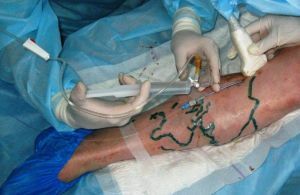 Varicose is a pathological process affecting the veins, disrupting their normal structure and thinning their walls.
Varicose is a pathological process affecting the veins, disrupting their normal structure and thinning their walls.
This disease, in general, is not fatal, but if this process is started, then it can become a very serious problem.
Content
- need for surgery
- Indications for surgery
- Contraindications to surgical intervention
- What veins usually require
- operation Preparation for the procedure
- Types
- operations Phlebectomy
- Miniflebektomiya
- Atraumatic stripping
- Short stripping
- endoscopic dissection of veins
- Endovasal laser coagulation
- Radiofrequency ablation
- Complicationsafter operation
- Rehabilitation measures
Need for operation
Necessarilygence surgery is able to identify only a doctor , which is based on a study of the whole organism. If the disease increasingly begins to worry with its symptoms, the walls of the veins begin to increase, it is necessary to seek advice.
Indications for operation
Special indications for the operation of removal of varicose veins can be identified, which can cause the attending physician to offer operative intervention:
- extensive varicose veins;
- excessively large pathological dilatation of veins;
- bright signs of the outflow of blood( puffiness and high fatigue of the legs);
- acute thrombophlebitis;
- trophic ulcers.
Contraindications to surgical intervention
There are contraindications to the removal of varicose veins in the presence of which any operation will be strictly contraindicated. These include the following:
- the patient's age is too long;
- late stage of the disease;
- infectious processes with complications;
- ischemic heart problems;
- acute hypertension;
- presence of serious skin diseases( pyoderma, eczema, erysipelas, etc.);
- pregnancy.
In the event that surgical treatment can not be performed, the doctor looks for alternative methods of exposure to that can affect the disease and cure it.
Which veins usually require an operation
Everyone has a vein device system that can be conditionally divided into superficial, deep and communicative, which connects the two previous ones. 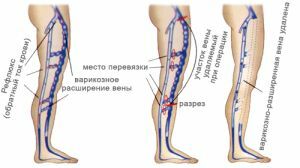
Most of the blood flow passes through the deep veins, and only about 10% are allocated to the subcutaneous ones.
However, they are able to be affected by varicose veins. If the surface of the skin began to appear large tubercles, as well as a very bright symptomatic, then it may be necessary to intervene
Preparing for the procedure
In the process of surgical intervention, veins damaged by varicose veins will be removed.
As a rule, traces after it come off within a few months.
As a rule, long preparation before the operation to remove varicose is not required.
So, the mandatory procedure conducted the necessary research , to reveal the state of the body.
Beforehand, must be informed to the surgeon about possible allergies to for various drugs, as well as about what medicines were taken throughout the whole week.
Immediately before surgery should take a shower, shave the limb , which will be held.
Operations
Each operation for the removal of varicose veins, no matter how different, will have the same list of contraindications and prescriptions for intervention.
The main differences will be the way it is carried out, the features and differences.
Phlebectomy
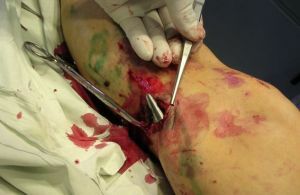 This type of intervention, like the others, will be directed to the return of normal blood flow through the veins .Removal of affected parts usually does not take more than 2 hours.
This type of intervention, like the others, will be directed to the return of normal blood flow through the veins .Removal of affected parts usually does not take more than 2 hours.
Spinal anesthesia is initiated at the beginning of the intervention. Vienna with varicose veins is surgically removed through incisions up to 5 mm by means of a special probe.
Until then, at the point where the varicose vein enters the deep vein, it is bandaged and only then cut off.
Miniflebectomy
It can be considered an analogue of phlebectomy, however it is carried out in accordance with certain features.
For example, removal of a vein is performed through a puncture , rather than a cut. This allows you to achieve a quick recovery period and a high cosmetic effect.
The entire operation is similar to phlebectomy.
Atraumatic stripping
This operation is intended for the day of removal of varicose veins on the legs. Initially through a small incision , which is produced in the groin area, a probe is inserted.
Vienna is tied, an additional incision is made under the knee joint, through which the affected vein is removed. Its branches are removed through other small incisions.
The main positive difference of this type of intervention from others will be the fact that the rehabilitation period is quite small .Soon after, the patient will be able to return to a moderate active life.
Short stripping
The implementation of this type of intervention involves the removal of only the site of the affected vein .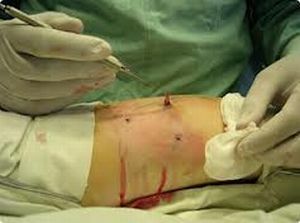
Initially, the doctor determines that her site is to be removed, after which 2 punctures are made on her and they are removed through them.
Intervention has a high cosmetic effect.
In general, it is produced using a similar technology with atraumatic stripping.
Endoscopic dissection of veins
Surgical intervention is performed by with the help of the endoscope , which allows controlling its course.
In the process of performing the operation, an incision is made on the affected varicose vein, through which the endoscope is inserted.
Thanks to this, the doctor monitors her progress and minimizes the possible negative consequences by an order of magnitude.
Vein bandaging is performed through a small incision, which is carefully measured. Usually, there are no special difficulties in the intervention process, so it passes successfully.
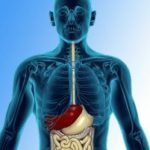 The most dangerous varicose veins of the esophagus can end with the patient's death if he does not receive timely assistance. What you need to do first of all, find out from our article.
The most dangerous varicose veins of the esophagus can end with the patient's death if he does not receive timely assistance. What you need to do first of all, find out from our article. We will teach you how to recognize uterine varicose during pregnancy and distinguish it from other complications.
Endovasal laser coagulation
Laser coagulation is performed by laser exposure to the affected area. In this case, the lumen of the vessel closes completely, and in the future it completely resolves.
Indication for the use of this type of intervention is:
- enlarged lumen in the veins;
- pathologically altered stem veins have a direct course;
- signs of trophic disorders;
- a small number of venous tributaries affected by varicose veins;
- large perforated discharges on the shin.
Removal of veins is carried out in a supine position. After marking the area to be removed, a special light guide is inserted into it.
This is followed by tumescent anesthesia and surgery is performed using ultrasound dopplerography. On the video, you can see the removal of varicose veins with a laser.
Radiofrequency ablation
The advantage of this method is the possibility of not performing any surgical intervention at all. So the rehabilitation period is very low.
During operation , a radiofrequency catheter is inserted into the vein of the vein, by means of which an electric shock is applied to its walls. High frequency of current allows to weld the barrel.
Complications after operation
Already after surgery, the emergence of complications is unlikely, but still possible.
Depending on their appearance will be from a number of signs, starting with the state of veins and ending with the ability of the skin to heal.
Of course, these factors are purely individual, so it is not worthwhile to say exactly what symptoms are possible.
Still, it is worth highlighting the most common effects of varicose veins removal with surgery:
- Thromboembolism. Assumes the development of thrombosis in the deep layers of veins and the occurrence of infection in tissues. To prevent the phenomenon, one should finish the bed rest as soon as possible and follow all the doctor's recommendations in strictness.
- Bleeding of the .Usually manifested in the process of dressing and do not pose a danger.
- Bruises. Descend in a couple of weeks.
- Pain in the limb can last for several days.
- Temperature rise , which is of a short-term nature.
Most of the possible complications are just a temporary measure. Only the first problem of represents a danger, as it can lead to a new intervention.
Rehabilitation measures
During the recovery process for a couple of weeks will need to constantly wear an elastic bandage , in order to ensure good compression, healing and prevent possible complications.
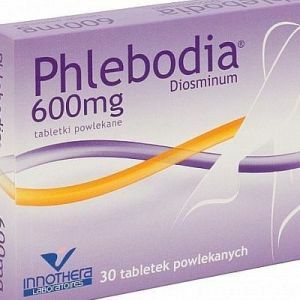 In addition, the doctor can prescribe and venotonizing drugs.
In addition, the doctor can prescribe and venotonizing drugs.
The timing of rehabilitation measures will depend on the condition of the skin, as well as on the stage of defeat by varicose veins.
Immediately after the intervention, should stay in bed and not disturb the leg, , but the next day, when the compression bandage is done, it's not just possible, but you also need to start walking.
It is recommended that in the process of restoring tissues after surgery, physiotherapy exercises, massages.
They will significantly increase blood flow and prevent the development of blood clots. Exercise is especially important for people of advanced age, because the blood flow in them is slowed down significantly.
